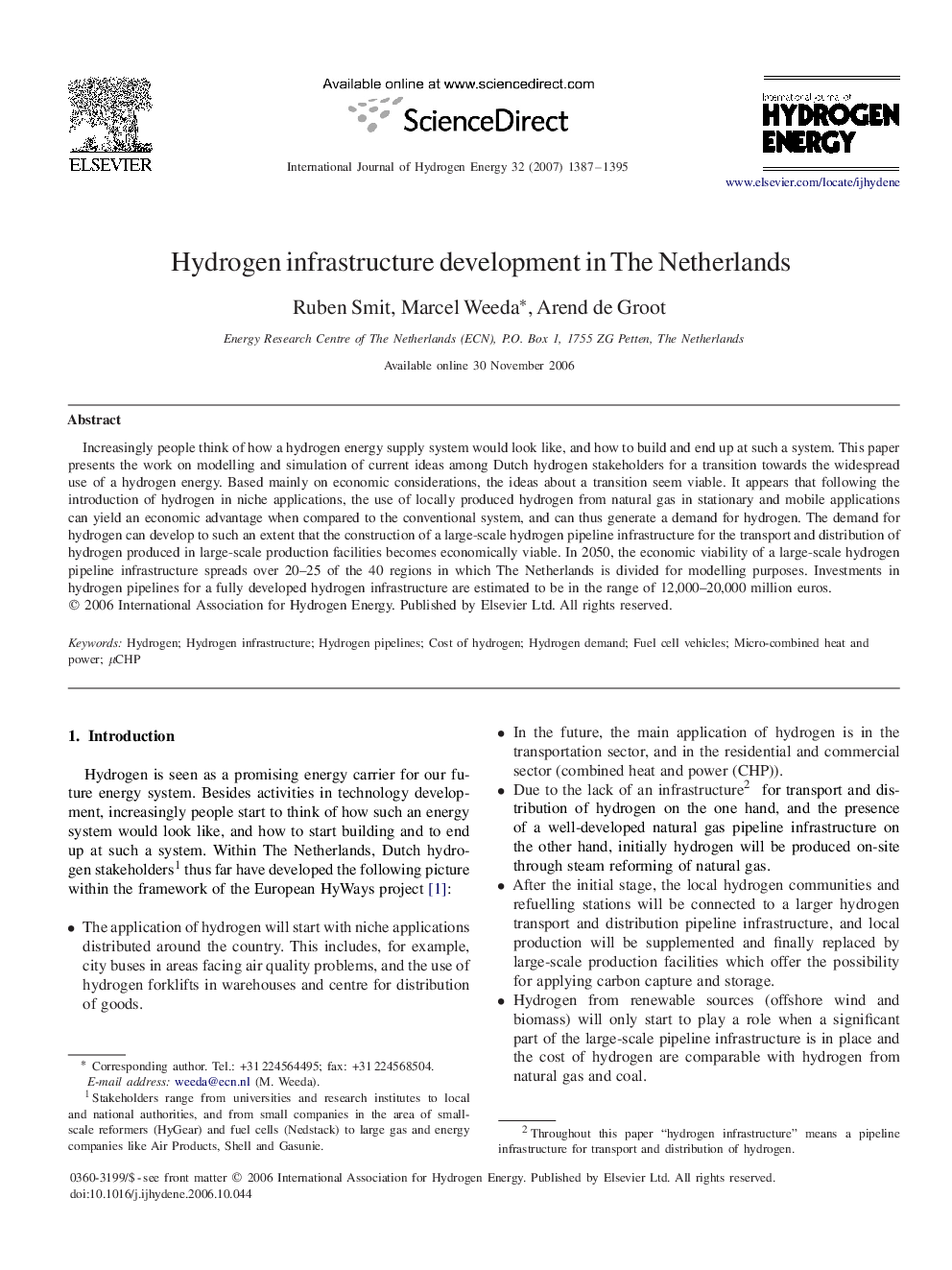| Article ID | Journal | Published Year | Pages | File Type |
|---|---|---|---|---|
| 1280478 | International Journal of Hydrogen Energy | 2007 | 9 Pages |
Increasingly people think of how a hydrogen energy supply system would look like, and how to build and end up at such a system. This paper presents the work on modelling and simulation of current ideas among Dutch hydrogen stakeholders for a transition towards the widespread use of a hydrogen energy. Based mainly on economic considerations, the ideas about a transition seem viable. It appears that following the introduction of hydrogen in niche applications, the use of locally produced hydrogen from natural gas in stationary and mobile applications can yield an economic advantage when compared to the conventional system, and can thus generate a demand for hydrogen. The demand for hydrogen can develop to such an extent that the construction of a large-scale hydrogen pipeline infrastructure for the transport and distribution of hydrogen produced in large-scale production facilities becomes economically viable. In 2050, the economic viability of a large-scale hydrogen pipeline infrastructure spreads over 20–25 of the 40 regions in which The Netherlands is divided for modelling purposes. Investments in hydrogen pipelines for a fully developed hydrogen infrastructure are estimated to be in the range of 12,000–20,000 million euros.
